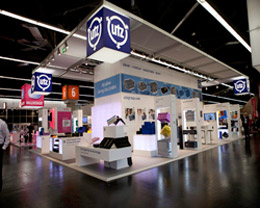Gender-Inclusive Cities: Can Urban Planning Consider Ladies and Minorities?
Girl crossing an intersection within the populous town of Buenos Aires
Juan Ignacio Coda/World Bank
Many urban centers in Latin America plus the Caribbean – and in the globa globe – had been planned and created by as well as for males.
Towns, house to a lot more than 80 % associated with population that is region’s tend to be more suited to heterosexual, able-bodied, cisgender guys. They don’t account fully for either the everyday lives or even the requirements of females, girls, sexual and gender minorities, and folks with disabilities, in accordance with the World Bank’s present publication Handbook for Gender-Inclusive Urban preparing and Design.
Urban inequality is very apparent. In areas without illumination, within the not enough general general general public restrooms for females additionally the LGBT population, within the roadways in bad conditions – that are hard to maneuver with a child stroller, as an example – additionally the long waits at trains and buses stops.
“In general general public areas and on the road, the town is extremely dangerous. You can find gangs, robberies, muggings; you will be kidnapped, chased, sexually raped and harassed. Walking outside is dangerous, specially during the night in isolated areas, ” said a woman that is young Lima, Peru.
“I frequently arrive belated to exert effort because we fall my son down during the daycare first additionally the roads have been in actually bad condition. Therefore much so that the final time, the front tires of their stroller dropped down and I also had to hold my son, my bag, the pc, my son’s case therefore the broken stroller for many obstructs. I got mugged but no choice was had by me but to help keep going, ” said a lady in Buenos Aires.
“Will you I want to understand whenever you have home? ” That could be the thing that is last ask a lady buddy as soon as we say goodbye. All Latin American females understand that they have reached danger of being mugged regarding the dark, winding streets, or that they can be harassed or mistreated in a poorly illuminated general public transportation section.
“The metropolitan room determines exactly how we organize our life and our communities, & most positively, our culture. As a result, it reflects and reproduces the sex stereotypes with which we expanded up and co-exist. Crucially, we develop towns and cities taking into consideration the “neutral masculine” usage and spending plans when the women’s role is within the personal area of the property versus the public area, ” said Horacio Terraza, Lead Urban professional in the World Bank and something associated with the Handbook’s authors.
“That is why it really is so essential to likewise incorporate the perspective of women and sex minorities within the design of y our metropolitan areas and our communities. It will probably enable them to truly have the exact same use of some great benefits of the city, ” he stated.
Internationally, females occupy simply 10 % associated with the highest-ranking jobs at leading architecture businesses and planning that is urban, in line with the Handbook. The design of public spaces seldom considers the daily lives of women and minorities for this reason.
Along with representation that is limited planning, ladies, girls and intimate and gender minorities are seldom expected to take part in community preparation and design procedures.
But how come metropolitan preparation crucial for shutting sex gaps? Based on the Handbook, “Urban preparation and design form the environmental surroundings all around us – and that environment, in change, forms how exactly we reside, work, play, move and rest. ”
A neighborhood in Mendoza, Argentina in that regard, Terraza cites a successful case in Latin America: La Favorita.
“There, community people took part in creating a general public room, Aliar Square, proposing tangible solutions for security, access, flexibility, usage, etc. Workshop participants redesigned the square, rethinking the uses of key areas like the municipal center that delivers wellness, training and social solutions, party classes, etc. Therefore the growth of brand new areas and gear such as for instance: a heightened children’s play ground so it easily noticeable from any place in the square, a hockey industry, coach stops, an amphitheater and a collection. Each one of these brand new areas and bits of gear reflects clear requirements of gender inclusion, ” he explained.
Considering all residents
In past koreanwomen.org korean dating times, urban centers had been conceived to mirror conventional functions as well as the division that is gendered of, specially through contemporary zoning. The Handbook sets out practical approaches, activities, and design guidelines on how to implement a participatory, inclusive design process that explores the experiences and uses of the city from the perspective of all citizens: women, men, and sexual and gender and other minorities although designed for public policymakers and urban planners.
Additionally gives evident, specific design tips, suitable for and adaptable to all or any areas, for a selection of preparing areas, including housing, general public transportation and flexibility infrastructure, other infrastructure solutions, and town master plans.
“We tend to assume we work from budgets that we know the needs of different social groups, including minorities, but that is often not the case. We usually underestimate the data that the consumer of this area has. We not just need certainly to pay attention to community people — we must include them into the design whenever we want comprehensive metropolitan areas, ” said Terraza.
 Zurück zur Artikelübersicht
Zurück zur Artikelübersicht
















Schreibe einen Kommentar
Du musst angemeldet sein, um einen Kommentar abzugeben.